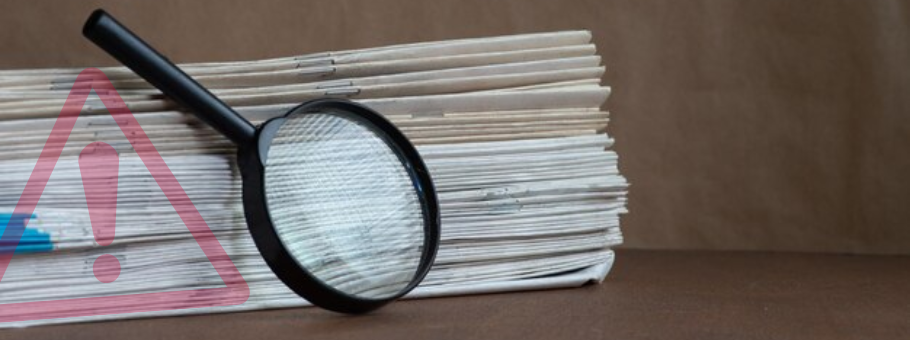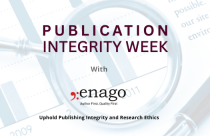Know More About Publication Ethics: An Interview With Christina Bennett (Part 1)

 After the 8th COASP conference this year, on behalf of Enago Academy, Enago’s Kuntan Dhanoya (Vice President, Business Development), had the opportunity to meet Dr. Christina Bennett, Associate Publisher, Ethics and Policy at the American Physiological Society (APS). Dr. Bennett is responsible for resolving ethical issues that arise in the 14 journals published by APS. As a key member of the Ethics and Policy department, she ensures that the studies published by APS adhere to APS’s ethical guidelines and policies.
After the 8th COASP conference this year, on behalf of Enago Academy, Enago’s Kuntan Dhanoya (Vice President, Business Development), had the opportunity to meet Dr. Christina Bennett, Associate Publisher, Ethics and Policy at the American Physiological Society (APS). Dr. Bennett is responsible for resolving ethical issues that arise in the 14 journals published by APS. As a key member of the Ethics and Policy department, she ensures that the studies published by APS adhere to APS’s ethical guidelines and policies.
Besides her role at APS, she is also a faculty member of the Short Course on Publication Ethics at CSE, through which she helps increase awareness of digital manipulation as well as train editors on tools that are available to identify tampering of images and data.
In the first part of this interview, we will take you through the various issues that the American Physiological Society follows to overcome the editorial and ethical challenges faced by their journals. Christina also shares some thoughts on how APS continues to improve its ethical guidelines and how they resolve disputes between researchers, peer reviewers, and institutions in cases where ethical misconduct has been reported.
Kuntan: You are extensively involved in publication ethics and policies at APS. Could you tell us a bit more about your current role?
Dr. Bennett: Currently, I am APS’s Associate Publisher for Ethics and Policy. In this role, I manage any ethical concern that arises within our journals. An ethical concern may be raised by a reviewer, editor, author, or reader. On any such concern that comes in, I work with the author and the editor to reach a solution. We try to clarify what the problem is, find the solution, and correct the paper or agree on some other form of resolution as appropriate.
The other part of my role is to help in the guiding policy for our publication. This could involve the changes coming from the federal government or from our society and how to address various issues within publishing. The topics can range from how to make our data more reproducible to guidelines on style, formatting, references, and layout—things that make the publication more appealing and clearer for our readers.
Kuntan: You have a PhD in physiology and have also done a postdoctoral fellowship with the National Cancer Institute. Could you tell us more about your transition into publishing?
Dr. Bennett: After my PhD and post-doc, as I was planning for my next step, I started looking at different profiles, and one of the positions that I kept on seeing advertised was for a Publications Ethics Manager at APS. Being a member of the APS and having a PhD in physiology, I was excited by the position because I have always wanted to work on science ethics. I thought this was a way to use my physiology background and integrate it with more with ethics. It was almost the perfect fit for me. It wasn’t something that I planned for when I started my PhD; I always thought I would end up being an investigator. But over time, I began thinking that maybe using my PhD training in a different role would better fit my personality.
Kuntan: APS has around 14 journals and they are highly renowned in their field. How do you and your team maintain such high standards of publishing?
Dr. Bennett: Mostly, it is because of our editors, editorial staff, and the peer reviewers. We have a great group of peer reviewers who are dedicated to our journals and give us excellent feedback so that the editors can educate the authors on what needs to be changed and highlighted to make their submissions strong. As for our high standards, we have ethical guidelines, information for authors, and a number of other processes from submission through publication, all of which serve as checks to ensure that our submissions are held to our standards. Things are verified at submission and at acceptance to ensure that what is published is as accurate and clear as possible.
Kuntan: How do you define research misconduct? Also, in terms of ethical issues, what are the top trends that you have noticed at APS?
Dr. Bennett: We define research misconduct the same way as the federal government defines it, which is fabrication, falsification, or plagiarism. Most of the fabrication or falsification appears in images or data, and plagiarism occurs within the text. At APS, we do not have many instances of misconduct, but the main ethical issues that we do see are related to figure presentation. We see images that have been cut in pieces and rearranged, or in which the contrast has been adjusted so much that we can’t tell whether lines or bands are connected. We also have issues related to authorship disputes—though not many, but they often take up a lot of time when they do occur. So I do encourage researchers to establish authorship early and consider it often, because these disputes are quite ugly. If we find that there is a problem with authorship, we can’t publish the paper until those issues are resolved, and that is frustrating for everybody.
As for figure manipulation, we can ask for corrections, and as long as we know that the original captures exist and that the data is okay, we can incorporate the correction and proceed with publication.
Those are our big issues right now. Luckily, we have only a few per year.
Kuntan: Talking about the ISMTE meeting, you gave a talk on detecting misconduct in images. Could you tell us a bit more about that session?
Dr. Bennett: One part of our review process at APS includes that we look at all photographs within an accepted paper. So once the paper is accepted, it goes into a workflow within which our editors screen all the photographs for proper presentation. By using some software tools, we can detect if things have been edited, rearranged, or manipulated in any way. In my workshop, I walked other editors through this process, because this is quite labor-intensive and it does require a level of expertise that not every journal has on board. In this session, my goal was to give more editors the tools that they need to examine images for manipulation or editing on their own.
Kuntan: What formal procedures do you follow to resolve a dispute with a researcher or an institution in a case of ethical misconduct?
Dr. Bennett: If we actually find that something has been done intentionally, we will inform all authors about the problem and consider whether the paper should be either rejected or retracted. Our first responsibility is to ensure that the literature is cleaned of all errors of this sort. Then the second issue is to determine whether the institution should be informed. Sometimes you may find misconduct in one article, but you don’t know if there is misconduct in other contributions from this group. So it is important to consider whether the institution should take a look at the situation as well.
In cases of authorship dispute, which are not considered as misconduct, it is hard for a journal to determine who should be an author, or whether the first author should be the second author and not the first, and so on. Hence, we also inform the institution and ask its representatives to mediate the dispute, because we are really not in a position to make those decisions. However, we don’t want to publish a paper where someone is being denied his or her appropriate role within the authorship list.
(This interview is a part of our interview series of connecting scholarly publishing experts and researchers.)









